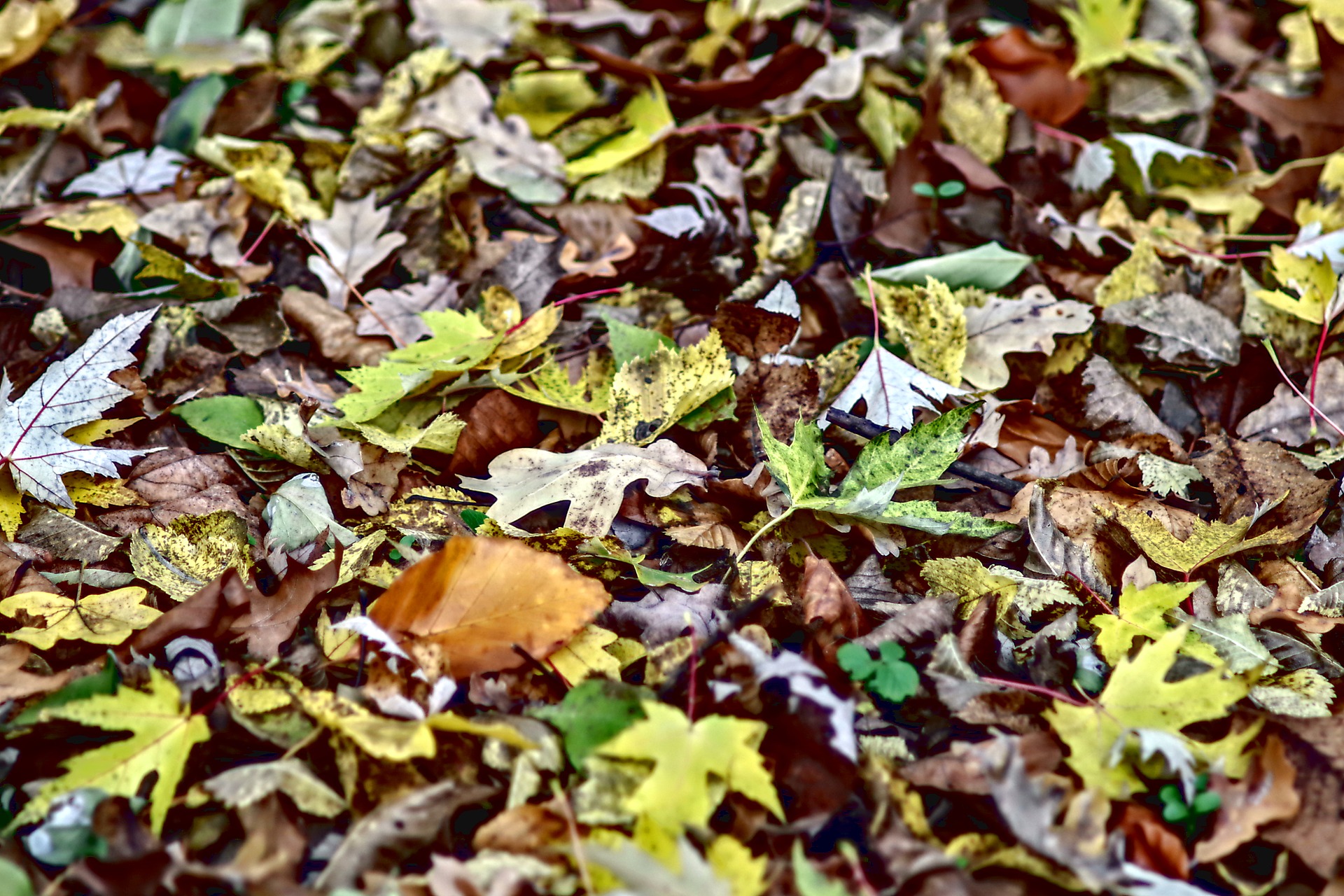Litter (The Leaf Kind)
Leaf Litter is an important part of our ecosystems. Though the name can be deceiving, leaf litter can be made up of leaves, twigs, fallen bark and other pieces of plant matter. But what does leaf litter do? Litter (the leaf kind) is vital for having healthy soils and plants. It also is an indicator of biodiversity.
When leaf litter accumulates on the forest floor, it releases nutrients like carbon, nitrogen, phosphorus and other organic compounds into the soil through decomposition. These nutrients are then taken in by plants who use them to grow. Litter also helps control the soil temperature. In the summer, leaf litter keeps the soil moist and damp by protecting it from the sun. In the winter, it acts as an extra layer of insulation (like a nice scarf or pair of mittens) for plants as they wait for spring.
Worms, snails, spiders, insects, fungi, and bacteria all make leaf litter their home. Birds love to eat bugs, and since there are so many different types of insects found in leaf litter, it is the perfect place for them to find a tasty snack. Other creatures like small mammals and carnivorous bugs also enjoy the all you can eat buffet served to them on the leaf litter. Leaving leaf litter lying around is very important for all the components of the ecosystem.
Litter (The Garbage Kind)
Leaving litter (the garbage kind) lying around is very bad for the environment. Beyond making your local park look ugly, trash can have many negative impacts on the wildlife in the area.
While we as humans know what is safe to eat, most animals do not. Plastic bags, drink lids and pop rings are perfect for sliding your head into when you are a small, curious critter. However, as the small curious critter you are, you also do not have thumbs or hands to wiggle out of this piece of plastic (think of those kids on the internet who get their heads stuck in railings and have to call the fire department).
Most animals can’t tell the difference between garbage and food, and since plastic doesn't break down for a very long time, it stays in their stomachs and their normal food can no longer be digested properly. Once enough plastic has built up in their stomachs, they will feel full even if they are not gaining any nutrients, which can make them sick and possibly even cause them to die. Learn more about what you can do to reduce plastic here.
One of the most common types of litter is cigarette butts. Many people think that they decompose quickly because of the material they are made of, but each one actually takes over 10 years to break down due to the cellulose acetate found in them. All types of trash litter can decrease water and soil quality, but cigarette butts are especially bad since they contain arsenic.
Litter (The Baby Animal Kind)
There is still one more type of litter we haven discussed yet, and it's the best one - baby animals! A litter is the live birth of multiple babies (3-8 usually) from the same parents. These baby animals should not be disturbed, much like the leaf litter. Similar to the trash kind of litter, domestic baby animals (like cats and dogs) do not belong outside. For those litters that do belong outside, it is important to make your backyard safe for all ages of wildlife, and keep your distance from any wildlife that you encounter.



